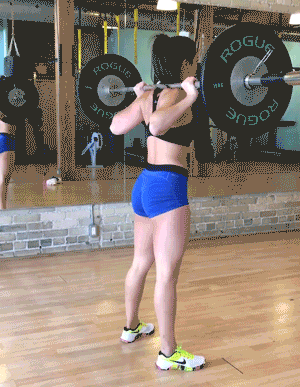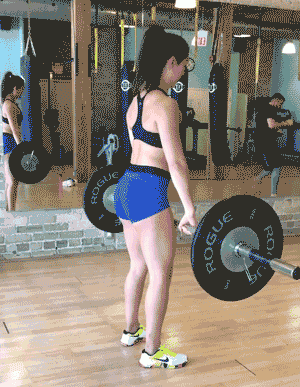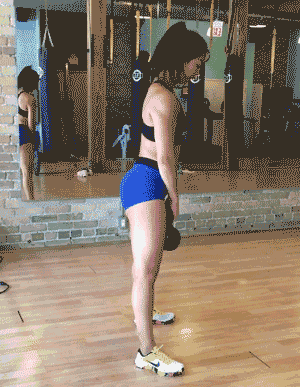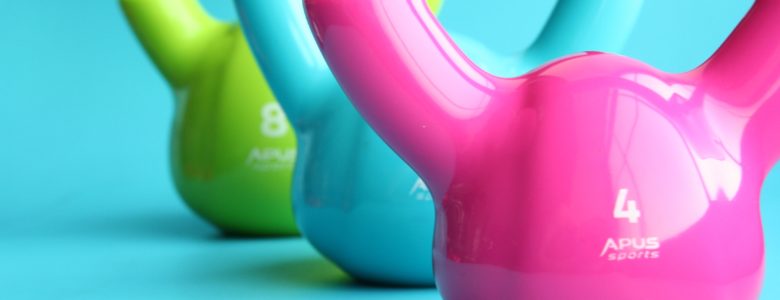If hitting the gym is on your to-do list this year, then you may be ready for some heavy lifting. You may already know to bend your knees to lift with ease, but you also need to keep your back straight!
Studies show that the most common injuries among weightlifters are to the spine, shoulders and knees. A neutral spine — with 3 natural curves in your neck, upper back and lower back — will protect you from these injuries. When held steady, it is the safest and strongest position for the spine.
The easiest way to find your neutral spine position is to stand tall with your back against the wall, touching the wall with your head, upper back and tailbone. Ideally, you should be able to fit your fingers between the wall and your lower back while keeping all three touch points against the wall.
Now, just because your spine is lined up doesn’t mean your workout can’t have range. Here are three excellent exercises that can lead to back injuries if you don’t maintain good form. Follow these tips to avoid the ache!
 Squats
Squats
There are few exercises that work as many muscles as a squat does. They target the muscles in your lower back, glutes, hamstrings, and quadriceps and can even involve your calves, shoulders, and core.
The key to injury prevention while performing this exercise is to avoid rounding your lower back.
Keep your chest up, bend your knees, and reach back with your glutes as if you were sitting in a chair. This will preserve your spine’s natural curve.
 Deadlifts
Deadlifts
The deadlift is a double-edged sword. When done properly, it is one of the best exercises to build a strong back. But when done incorrectly, it can cause lower back injuries. If you keep your lower back neutral and the bar close to you, you’ll strengthen the muscles around your spine, avoiding possible injuries.
Before you begin, you should know that hip hinging is the key to success when deadlifting. The hip hinge involves bending forward at the hips while maintaining a neutral spine. Imagine there’s a wall a couple of feet behind you and try to touch your glutes to it. This forces you to hinge at your hips instead of overusing your knees. Remember to lift your chest – it’s the easiest way to make sure you’re not hunched over or rounding your back.
 Kettlebell Swings
Kettlebell Swings
This exercise is perfect for overcoming the negative effects of sitting — it’s like putting WD-40 on your joints! It’s also a great way to teach proper technique for hip hinging, which is crucial for both squats and deadlifts.
The best way to avoid injury is to maintain a neutral spine and only swing the kettlebell as far up as shoulder level. Some exercises (e.g. a kettlebell snatch) will have you swing higher than your shoulders, but keeping it at shoulder height makes it easier to keep your spine in neutral position. If you swing any higher it can also be difficult to avoid shrugging, which can lead to shoulder issues.
Are You Experimenting With CrossFit?
CrossFit is a great way to stay active and push yourself in ways you may not experience with a traditional gym routine. However, many of the movements may feel unfamiliar so stay alert when first starting. Modifications to traditional exercises are common in CrossFit, so start light and ask trained professionals to guide you through the learning process.
Most CrossFit classes take place in group sessions, so you may not receive the individual attention you need when starting out. Chiropractors are here to help! The clean and jerk is a common Olympic lift used in CrossFit. Here are some basic tips on how to avoid back pain while doing it.
The Clean:
The easiest way to complete this exercise is to think of it as a combination of a deadlift and a squat. Here’s how to do the clean safely:
- Perform a deadlift to bring the bar to your hip/thigh level.
- Using an explosive hip drive forward, push the bar away from your hips and use your arms to flip the bar and guide it upwards.
- As the bar travels upwards, assume a quick squat to catch the bar onto your shoulders where it can rest.
- Once caught on your shoulders, stand tall.
- To avoid back injuries, maintain a neutral spine throughout this movement. Remember that a hip drive is the key to success with this exercise, not throwing your back or pulling the bar with your arms!
The Jerk:
The most common mistake seen with this exercise is a heavy reliance on the arms or shoulders to throw the bar overhead. Here’s how to do the jerk safely:
- Use your hips to drive the bar upwards with a mini explosive squat movement to get the bar up off the shoulders.
- Use your arms to guide the bar up as you quickly squat down to get the bar over your head.
- Once the bar is in the overhead position, avoid overarching the lower back and stand tall.
First Time Lifting? Follow These 5 Tips!
- Start light. Good form is harder with heavier weights, so master the technique first. Practice the movements with light weights until your confidence grows.
- Pick up weights correctly. Many gym-goers have great form when performing the exercises but not when picking up or putting down weights. Injuries can occur in this transition, so stay focused!
- Keep going. The best way to get better at lifting is to keep lifting.
- Be patient. Good things come to those who wait. Your training may progress slowly but don’t let that deter you. Work with a coach or trainer to develop a plan that will work best for your needs.
- Visit a chiropractor. Do you have existing conditions that may limit the activities you tackle? Talk to your chiropractor about exercises that will be best for your condition and which movements you may want to avoid. If you do get injured, a chiropractor can assess, diagnose and develop a treatment plan for your recovery.

